Valdivia (Chile) 作者: 来源: 发布时间:2021-06-03
1. Population and Area
Valdivia is a city and commune in southern Chile, administered by the Municipality of Valdivia. The city is named after its founder Pedro de Valdivia. ince October 2007, Valdivia has been the capital of Los Ríos Region and is also the capital of Valdivia Province.
Population: 129,952
Area: 1,015.6 km2 (392.1 sq mi)
Location: It is located at the confluence of the Calle-Calle, Valdivia, and Cau-Cau Rivers, approximately 15 km (9 mi) east of the coastal towns of Corral and Niebla.
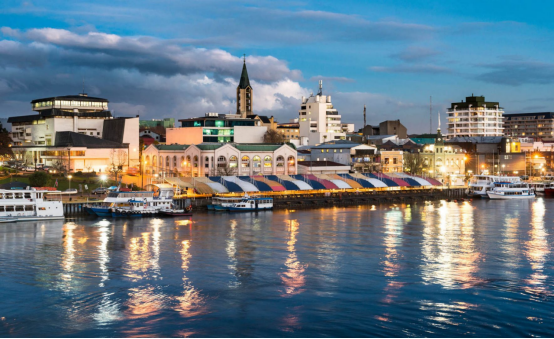
2. Geography
The geography of the Valdivia area consists of wetlands and alluvial terraces. Several rivers, such as Cau-Cau, Calle-Calle and Cruces, join near the city forming the larger Valdivia River. Valdivia River in turn empties to Corral Bay in the Pacific Ocean just some 15 km west of Valdivia. This river network made Valdivia a trade center even since Pre-Hispanic times. The city itself was built on a riverine terrace but expanded later over adjacent wetlands. Nowadays the city is virtually surrounded by hills by all sides except north where Valdivia's lowlands connect to the flatlands of San José de la Mariquina. Some hilly areas around Valdivia are covered with exotic forest species such as Douglas-fir, Pinus radiata and Eucalyptus globulus. Other places are used for recreational purposes or conservation of native ecosystems. Additional Northern Hemisphere exotic trees such as birch, horsechestnut and poplar are common in residential areas. Palms are occasional.
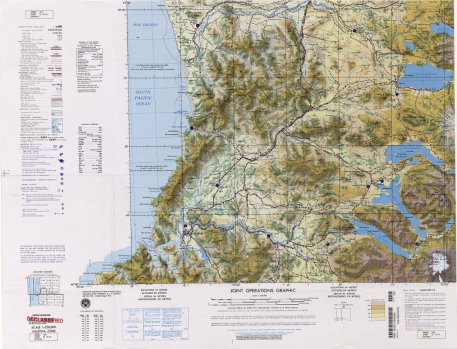
Map of Valdivia and its surroundings
Within the context of plate tectonics the city lies at a convergent margin where Nazca Plate in the Pacific is subducted beneath the South American Plate. Topographically Valdivia lies in a depression amidst the Chilean Coast Range. The basement rocks that crops out in the hills around the city are of metamorphic type. The city itself is chiefly built upon terraces made up of hardened volcanic sand. This volcanic sandstone is known as "cancagua" and deposited during the late Pleistocene epoch. As terraces took shape during the interglacial preceding the Llanquihue glaciation —the last glacial period— this interglacial is known in Chile as the Valdivia interglacial.
A tectonically and eustatically stable period during the Oligocene and Early Miocene allowed erosion to create deep valleys in the Coast Range and peat swamps at what is now the estuary of the Valdivia basin. About 23.5 million years ago this stable period was interrupted by a major volcanic eruption and 23 mya ago an increase in convergence rate at the Peru–Chile Trench caused an uplift of the landscape and renewed erosion. However basin subsidence and a marine transgression formed deep embayments, tidal flats, bayhead deltas and beaches.
Transportation
Roads and bridges
Most of Valdivia lies on the southern side of the Valdivia and Calle-Calle Rivers but other areas of the city, such as Isla Teja and Las Animas, are connected to it by bridges. The main access points to the city are Calle-Calle Bridge from the north and a southern route. Both connect the city with the Pan-American Highway and run through forested areas and wetlands.
Calle-Calle Bridge, the first bridge built in the city, connects Valdivia with Las Animas and forms the northern highway access to the city. Pedro de Valdivia Bridge was built in 1954 and connects the city with Isla Teja, where many German immigrants once lived. During the Great 1960 Valdivia earthquake only the minor Caucau Bridge (connecting Las Animas with Isla Teja) was destroyed, while all other bridges were repaired and are still in use. In 1987 Augusto Pinochet opened Río Cruces Bridge, making the coastal town of Niebla as well as Torobayo and Punucapa accessible by road. Calle-Calle Bridge, the main access to the city, was enlarged in the 1990s.
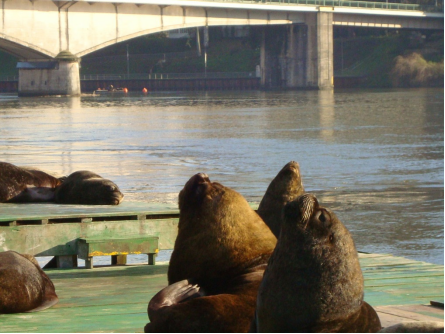
Pedro de Valdivia Bridge and the city's sea lion colony
Waterways
Until highway bridges were built, Valdivia's economy and citizens depended on boat traffic on the surrounding rivers, but with a contraction of bridges and highways, the river has lost its importance. Today, the rivers are used by the commercial ships built or repaired in Asenav, one of Chile's most important shipyard companies, and by tourist boats. Some of the locations that are regularly reached by tourist boats include Mancera Island and Punucapa. Fishing boats also travel inland from the coast to the River Market. Today, just one ferry is still in operation, the Niebla–Corral line, as it is much quicker to reach Corral by ferry than by road.
Airports
The city is served mainly by Pichoy Airport, lying 32 km northeast of the city via the north entrance road that connects the city with the Pan American Highway. The smaller but much closer Las Marías Airport is used primarily by small aircraft, with no airlines operating there.
3. Economy
The main economic activities of Valdivia include tourism, wood pulp manufacturing, forestry, metallurgy, and beer production.
The city and commune of Valdivia rely heavily on silviculture, the pulp and paper industry and other forestry-related activities (the harvesting and processing of wood from nearby plantations of eucalyptus and Douglas firs). Large businesses such as CELCO, Bomasil and Louisiana-Pacific have established wood processing factories near Valdivia. Metallurgy, naval construction and repairs are also important industries, with the companies of Asenav and Alwoplast based in the area. Agroforestry/agriculture, livestock, aquaculture and food processing are lesser but also important industries that contribute to the region's economy. The chocolate company (Entrelagos) contributes to the image of the region, as does the brewing industry, a symbol of the area and another important part of the local economy, with Kunstmann the most famous brewery in Valdivia. Beer, along with cold cut meat and sausages, is part of the city's German heritage and is preserved as part of the local heritage. Trade, restaurants and hotels link to the tourism industry which represent an important part in Valdivia's growing economy.
4. Companies and projects
Asenav
Among the most internationally recognized companies based in Valdivia is Asenav, also known as Astilleros y Servicios Navales SA. Asenav is a Chilean ship building company, based in Santiago with its main shipyards located in southern Chile in the middle of the city of Valdivia, some 15 km (9.3 mi) from the Bay of Corral at the Pacific coast. The company was established in 1974 by the German immigrant Eberhard Kossmann.
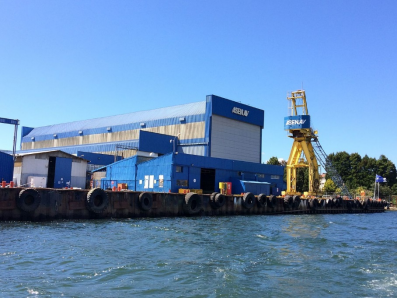
In the field of telecommunications, the National Telephone Company was born in 1983 in Valdivia, which is currently known nationally with the name of Telefónica del Sur (Telsur) from the hand of a group of entrepreneurs of German origin settled in the city.
Project
A new private project is being developed by "Los Solares", an environmentally friendly company that operates solar-powered river taxis on Valdivia River. The project is called Transporte Fluvial Sustentable (TFS, or "Sustainable Water Transportation" in English). So far, the company has a fleet of with three river taxis, and a small, sustainable and locally designed floating village that includes a pier, a café and the company's offices. The community produces its own electricity, water supply and processes its own wastewater with a bacterial solution.
5. Tourism
Valdivia is a historic tourist destination in Chile, valued for the beauty of the city and surrounding areas, the area's culture and its history. It is an all season city, but during the summer months in particular (December, January, February) tourism is a major source of income for Valdivia's economy. "Valdivian Week" (Spanish: Semana Valdiviana), as it has been known since 1917, is a long-held tradition that dates back to the foundation of the city. Starting February 9 each year, it commemorates the city's anniversary and also gives Valdivia the chance to promote itself as a tourism center. "Semana Valdiviana" features an allegorical parade of ships – a tradition that began in the seventeenth century as a protest against the Spaniard authorities – and also includes a big artisan market, fairground rides, and the election of the "queen" of Los Rios. The week ends with fireworks and theatre performances on the closing night, known as "Noche Valdiviana" (Valdivian Night). The center of the city has a rich architectural heritage. One of its most visited buildings is the "Mercado Municipal" ("municipal market"), a local produce market that is also now a gastronomic and cultural attraction. Also popular are the "Convento San Francisco" (Saint Francis Convent) and the European-style buildings dating back to the beginning of the 20th century, used today by the city's universities, cultural centers and government.
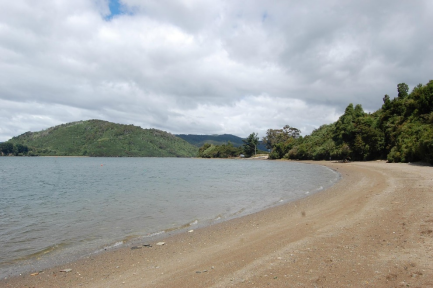
Isla Mancera: (Mancera Island)
It lies at the edge of the Valdivia River, east of Bahía de Corral (Corral Bay) in front of Niebla. It is known for its fortifications as the Castillo San Pedro de Alcántara, dating from the colonial era as part of the system of forts of Valdivia.
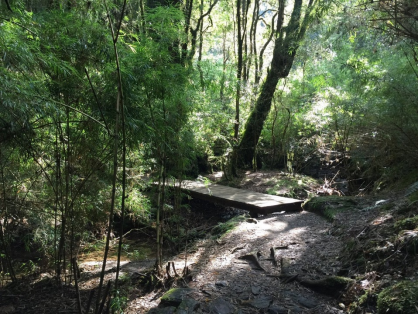
Parque Oncol: (Oncol Park)
It is one of the most important natural areas of Valdivia, where you can see the flora and fauna of the Valdivian rainforest. It features marked trails and panoramic views to observe the surrounding area.
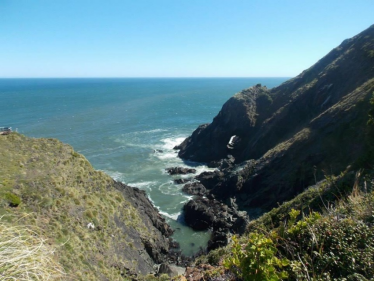
Reserva Punta Curinanco
Punta Curiñanco is a natural reserve 40 km (25 mi) from the city of Valdivia, Chile. The park has an area of 80 ha (198 acres) on the headland of Punta Curiñanco (Curiñanco Point) at just at the northern end of Curiñanco beach and village and on the western side of the Valdivian Coast Range. Punta Curiñanco covers area that includes different types of Valdivian temperate rain forest as well as coastal shrublands, wetlands and sea-side rocks.
6. History and culture
History
Valdivia was the first city founded by the Spaniards in Chile. In 1552 the conquistador Pedro de Valdivia named this city Santa María la Blanca de Valdivia and was considered a strategic location in the South for its outlet to the Pacific Ocean.
The first settlers in the area were a Mapuche-huilliche people known as Ainil. After its founding as a Spanish city a rapid development began for its seaport. However, the city was hit by an earthquake in 1575 and then recaptured by the Indians in the Batalla de Curalaba (Battle of Curalaba) in 1598 that destroyed the city in 1599.
After this and a raid by the Dutch in the territory, during 1645 the Spanish began restocking and the Fuerte de Mancera (Fort Mancera) was built. At the end of the eighteenth century and because of the strategic importance of the zone in the southern tip of the continent, the Camino Real, which linked Valdivia and Chiloe by land was built.
Valdivia Bay, called Corral, was fortified with a broad defense system consisting of 17 forts built to withstand the siege of pirates and Dutch and English privateers, which failed to enter the city to plunder it.
Later, and after the independence of Chile, a process of attracting German immigrants to the area was made, as it was thought that their presence could positively influence the development of the area. New settlers arrived with technology for the industry, developed farmlands and brought their culture and traditions to the identity of the city.
Valdivia became an important port because of its location near one of the few navigable rivers in Chile, which allowed the building of large ports.
The city is also known for being protagonist of the Valdivia Earthquake on May 22, 1960, the largest seismic event recorded by modern instruments, with more than 10 degrees on the Richter scale. It was so intense that it caused tsunamis along the coasts of Japan and Hawaii and changed the geography of the city, flooding some areas, so the river was no longer usable for navigation to the sea.
In 2007, the new Región de los Ríos was created, comprising the provinces of Valdivia and Ranco and where Valdivia is the capital city.
Culture
Valdivia is often promoted for its unique characteristics, that make it different from other cities in Chile: Valdivia has an early Spanish colonial past, plus a later history of German colonization. Both eras left visible landmarks such as the forts of Corral Bay and the German-style wood houses. The governments of Spain and Germany currently maintain honorary consulates in Valdivia. The city is commonly seen as a tourist magnet in Chile, and sometimes described as La Perla del Sur (The Pearl of the South) and as La ciudad mas linda de Chile (Chile's most beautiful city). Every year during the summer months of January and February the municipality organizes many free cultural events along the river site, such as concerts, sporting events, and other entertainment. To mark and celebrate the end of the touristic summer months, halfway through February all entertainment reaches its climax with the celebration of noche Valdiviana (Valdivian night). During this night many local groups and communities present themselves on boats during a night parade over the river. Every boat has its own theme related with one theme of that year. At the end a jury picks the winners in different categories. The parade is by tradition started by a boat which presents la reina de los ríos. In recent years Valdivians have showed an increasing interest in nature and ecotourism. An example of this was the formation of Acción por los Cisnes an ecologist group formed to protect black-necked swans and the natural environment that surrounds the city, particularly wetlands created or expanded by the Great Chilean earthquake. With the founding of Universidad Austral in 1954 and the arrival of the CECS research center, Valdivia is now considered a major research center in Chile, particularly in areas related to nature such a glaciology and ecology. The Great Chilean earthquake and the national government's creation of the Los Lagos Region were difficult for Valdivian society. Valdivians resented to be punished first by a major earthquake and then by being placed under the administration of what they perceived to be a less-deserving city, Puerto Montt. The recent creation of a new, smaller, but more independent region (Los Ríos), with Valdivia as its capital, reduced the previous stigma.
Valdivia's varied influences are reflected by its multicultural toponyms that include placenames of Mapuche, Spanish, Quechua and German origin.
Spanish colonial influences
During much of the colonial period, Valdivia was essentially a military camp, a walled city surrounded by hostile natives. The coastal defenses and their garrisons made up a large part of the population. After several fires and earthquakes, nearly all buildings from this period were destroyed, with the exception of the military defenses. Valdivia's best known historical landmarks are now the two towers which were part of a former city wall, built by the Spaniards to defend the city, known as Torreones: Torreón Los Canelos and Torreón del Barro.
German influences
Since the first Germans migrated to Valdivia in the mid-1840s, German cultural influence has been visible in the city. Germans in Valdivia settled mostly in the Isla Teja and Collico suburban areas. Until the building of Pedro de Valdivia Bridge, inhabitants of Isla Teja lived isolated from the city, where it was common that children first learned to speak German before Spanish. Nowadays the German language is preserved by the Instituto Alemán Carlos Anwandter one of Latin America's oldest German schools. German descendants also form Valdivia's oldest fire station Germania, located in Isla Teja.
German immigrants and their descendants formed their social club Club Alemán, which after World War II changed names to Club la Unión. German workers once had their own club simply called El Alemán (The German).
Valdivia also hosts Bierfest Valdivia, a celebration that could be described as a small, regional Oktoberfest, despite being celebrated in late January or February of every year (during the local summer, when there is the largest influx of tourists). The main sponsor and organizer is Kunstmann, a local beer company, founded by German nationals, but since bought out by the largest beer and beverages company in Chile (CCU).
7. Other information
The city is commonly seen as a tourist magnet in Chile, and sometimes described as La Perla del Sur (The Pearl of the South) and as La ciudad mas linda de Chile (Chile's most beautiful city).
8.Contact
Mayor: Omar Sabat Guzmán
Website: http://www.munivaldivia.cl/
Facebook: @municipalidaddevaldivia
Tel: +56 63 228 8723
Email: osabat@munivaldivia.cl (mayor)
Office address: Ilustre Municipalidad de Valdivia, Independencia 455, Valdivia, Los Ríos, Chile
